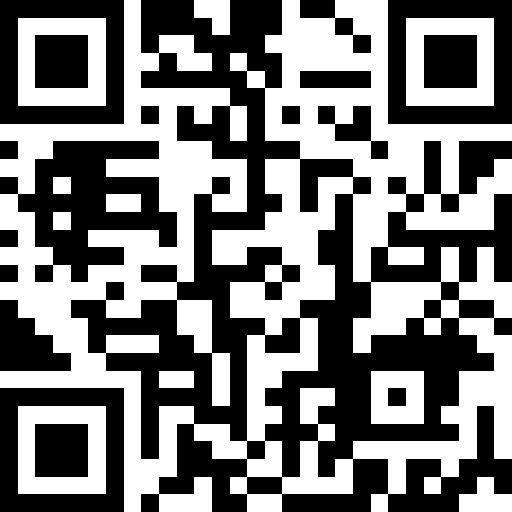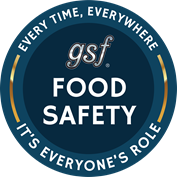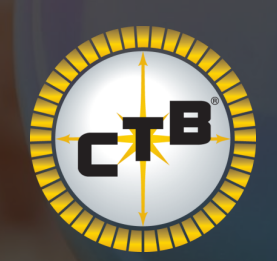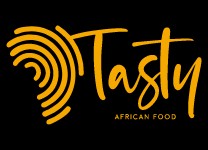Self-Inspection Record
-
Area/Location
-
Inspector(s)
-
Date
-
Prepared by
Maintenance for Food Safety
Ceilings and Overhead Structures:
-
Ceilings and overhead structures are clean and free of dirt, mold, and debris and maintained in good repair.
- Not applicable to Area
- No Issues Observed
- Minor Issues
- Improvement Needed
- Serious
- Unsatisfactory
-
There is no flaking paint, rust, caulk, tape, insulation, labels, or other loose materials over product zones.
- Not applicable to Area
- No Issues Observed
- Minor Issues
- Improvement Needed
- Serious
- Unsatisfactory
-
Drips and condensation are prevented or controlled and monitored.
- Not applicable to Area
- No Issues Observed
- Minor Issues
- Improvement Needed
- Serious
- Unsatisfactory
-
Roof leaks are promptly identified, controlled, and repaired. Catch pans, deflector plates, or other means of control are provided where conveyors cross or run parallel at different levels.
- Not applicable to Area
- No Issues Observed
- Minor Issues
- Improvement Needed
- Serious
- Unsatisfactory
Equipment and Utensil Construction:
-
Equipment and utensils (shovels, rakes, brooms, hooks, squeegees, etc.) are - Clean and free of dirt, mold, and debris?
- Not applicable to Area
- No Issues Observed
- Minor Issues
- Improvement Needed
- Serious
- Unsatisfactory
-
Equipment and utensils (shovels, rakes, brooms, hooks, squeegees, etc.) are - Maintained in good repair and replaced as needed?
- Not applicable to Area
- No Issues Observed
- Minor Issues
- Improvement Needed
- Serious
- Unsatisfactory
-
Equipment and utensils (shovels, rakes, brooms, hooks, squeegees, etc.) are - Made of corrosion free, durable, non-toxic materials (no wood)?
- Not applicable to Area
- No Issues Observed
- Minor Issues
- Improvement Needed
- Serious
- Unsatisfactory
-
Welds are smooth, cleanable, and not rusted or corroded. There are no spot or tack welds on or over food contact surfaces.
- Not applicable to Area
- No Issues Observed
- Minor Issues
- Improvement Needed
- Serious
- Unsatisfactory
-
Equipment is maintained to prevent - Leaks over or into product zones
- Not applicable to Area
- No Issues Observed
- Minor Issues
- Improvement Needed
- Serious
- Unsatisfactory
-
Equipment is maintained to prevent- Product overflow outside the product zone
- Not applicable to Area
- No Issues Observed
- Minor Issues
- Improvement Needed
- Serious
- Unsatisfactory
-
Equipment is maintained to prevent- Metal-on-metal or metal-on-plastic wear
- Not applicable to Area
- No Issues Observed
- Minor Issues
- Improvement Needed
- Serious
- Unsatisfactory
Leaks and Lubrication:
-
There is no evidence of oil or lubricant leaks or excessive lubrication. Catch pans, deflector plates, or other means of control are provided where motors, gearboxes, and bearings are mounted over product zones.
- Not applicable to Area
- No Issues Observed
- Minor Issues
- Improvement Needed
- Serious
- Unsatisfactory
-
Only food grade lubricants, oils, etc. are used in product contact areas (direct or indirect).
- Not applicable to Area
- No Issues Observed
- Minor Issues
- Improvement Needed
- Serious
- Unsatisfactory
-
Lubricants are labeled, segregated, and stored in a secured area. Food grade and non-food grade lubricants are kept separate from each other.
- Not applicable to Area
- No Issues Observed
- Minor Issues
- Improvement Needed
- Serious
- Unsatisfactory
Temporary Repair Materials:
-
Temporary repairs are - Dated and controlled - Replaced with permanent repairs as soon as possible and practical to prevent contamination - Made of food-grade material when on or over product zones
- Not applicable to Area
- No Issues Observed
- Minor Issues
- Improvement Needed
- Serious
- Unsatisfactory
-
Tape, wire, string, cardboard, plastic, and other temporary materials are not used for permanent repairs.
- Not applicable to Area
- No Issues Observed
- Minor Issues
- Improvement Needed
- Serious
- Unsatisfactory
Glass, Brittle Plastics, and Ceramics Control:
-
Glass and brittle plastics (light covers, windows, mirrors, etc.) in or over product zones, product areas, or ingredient or packaging storage areas are not damaged and are of the safety type or otherwise protected to prevent breakage.
- Not applicable to Area
- No Issues Observed
- Minor Issues
- Improvement Needed
- Serious
- Unsatisfactory
Air Makeup Units:
-
Air makeup units are fitted with clean filters and are free of mold, algae, and other debris. Air blowing equipment (fans, cooling units, etc.) is located, cleaned, and operated in a way that does not contaminate raw materials, work-in-process, packaging materials, food contact surfaces, or finished products.
- Not applicable to Area
- No Issues Observed
- Minor Issues
- Improvement Needed
- Serious
- Unsatisfactory
Floors and Walls:
-
Air makeup units are fitted with clean filters and are free of mold, algae, and other debris. Air blowing equipment (fans, cooling units, etc.) is located, cleaned, and operated in a way that does not contaminate raw materials, work-in-process, packaging materials, food contact surfaces, or finished products.
- Not applicable to Area
- No Issues Observed
- Minor Issues
- Improvement Needed
- Serious
- Unsatisfactory
Drains:
-
Floor drains are clean, in good repair, and operational.
- Not applicable to Area
- No Issues Observed
- Minor Issues
- Improvement Needed
- Serious
- Unsatisfactory
Walls:
-
Walls are cleanable and in good repair with no holes, cracks, crevices, peeling paint, or rust.
- Not applicable to Area
- No Issues Observed
- Minor Issues
- Improvement Needed
- Serious
- Unsatisfactory
Outside Grounds and Roof:
-
Equipment stored outside is placed to prevent pest harborage, make the inspection process easier, and protect equipment from deterioration and contamination.
- Not applicable to Area
- No Issues Observed
- Minor Issues
- Improvement Needed
- Serious
- Unsatisfactory
-
Vegetation (trees, shrubs, weeds, and tall grass) does not provide pest harborage or access to the building.
- Not applicable to Area
- No Issues Observed
- Minor Issues
- Improvement Needed
- Serious
- Unsatisfactory
-
Outside waste or scrap compactors, modules, and containers are maintained to minimize and contain leakage, are removable so that the area can be cleaned, and remain covered or closed.
- Not applicable to Area
- No Issues Observed
- Minor Issues
- Improvement Needed
- Serious
- Unsatisfactory
-
The roof, structures, and outside grounds are well maintained with no excessive standing or pooled water, pest activity (pests, evidence of activity, or nests), excess vegetation, or refuse.
- Not applicable to Area
- No Issues Observed
- Minor Issues
- Improvement Needed
- Serious
- Unsatisfactory
Others:
-
A non-conformance identified that is not outlined within the Maintenance for Food Safety requirements above.
- Not applicable to Area
- No Issues Observed
- Minor Issues
- Improvement Needed
- Serious
- Unsatisfactory
Cleaning Practices
Product Zone and Product Area Cleaning:
-
Product area and product handling equipment (including equipment over product areas) are clean and free of excessive debris, decaying product reside, or other contaminants during operations.
- Not applicable to Area
- No Issues Observed
- Minor Issues
- Improvement Needed
- Serious
- Unsatisfactory
Cross Contamination Prevention:
-
Cleaning and production areas are separated by air curtains, partitions, doors, or other exclusionary systems. Water hoses and compressed air hoses are not used to clean floors or equipment in or near areas of exposed finished product due to the formation of aerosols.
- Not applicable to Area
- No Issues Observed
- Minor Issues
- Improvement Needed
- Serious
- Unsatisfactory
Equipment and Tools:
-
Food contact utensils (shovels, rakes, hooks, etc.) must be: - Clearly identified - Separated from non-food contact tools and utensils - Stored on a clean surface off the floor - Cleaned on a predetermined schedule - Sanitized before use - Removed from use and replaced if damaged, worn, or showing signs of potential contamination
- Not applicable to Area
- No Issues Observed
- Minor Issues
- Improvement Needed
- Serious
- Unsatisfactory
-
Food contact utensils and cleaning aids are not wood handled, steel wool, sponges, ScotchBrite™ style pads, cloth rags, or wire brushes.
- Not applicable to Area
- No Issues Observed
- Minor Issues
- Improvement Needed
- Serious
- Unsatisfactory
-
Hose nozzles are stored off the floor and do not come in contact with unsanitary surfaces at any time.
- Not applicable to Area
- No Issues Observed
- Minor Issues
- Improvement Needed
- Serious
- Unsatisfactory
Cleaning Chemicals:
-
All cleaning chemicals are properly labeled and stored securely away from production and food storage areas when not in use.
- Not applicable to Area
- No Issues Observed
- Minor Issues
- Improvement Needed
- Serious
- Unsatisfactory
Daily Housekeeping Cleaning:
-
Production, product handling areas (shipping and receiving, recoup, salvage and, rework areas, etc.), storage areas (warehouse, freezers, coolers, etc.), and support areas (hallways, cleaning rooms, etc.) remain clean and free of excessive debris.
- Not applicable to Area
- No Issues Observed
- Minor Issues
- Improvement Needed
- Serious
- Unsatisfactory
-
Parts, tools, utensils (buckets, shovels, brooms, rakes, hooks, etc.), PPE (gloves, hard hats, ear plugs, etc.), and other supplies (pens, clipboards, calculators, scissors, etc.) are stored properly when not in use and kept off floors, equipment (idle or in use), control panels, catwalks, stairs, ladders, etc.
- Not applicable to Area
- No Issues Observed
- Minor Issues
- Improvement Needed
- Serious
- Unsatisfactory
Non-Product Zone and Support Area Cleaning:
-
Non-product zone and support areas (maintenance shop, storage areas, waste handling and recycling areas, utilities rooms, meeting spaces and offices in the production area, etc.) are kept clean.
- Not applicable to Area
- No Issues Observed
- Minor Issues
- Improvement Needed
- Serious
- Unsatisfactory
Master Sanitation Schedule (MSS):
-
MSS tasks applicable to the area being inspected have been completed according to the prescribed frequency and visual inspection verifies that the areas are clean.
- Not applicable to Area
- No Issues Observed
- Minor Issues
- Improvement Needed
- Serious
- Unsatisfactory
Other:
-
A non-conformance identified that is not outlined within the Cleaning Practices requirements above.
- Not applicable to Area
- No Issues Observed
- Minor Issues
- Improvement Needed
- Serious
- Unsatisfactory
Operational Methods and Personnel Practices
Storage Practices:
-
Storage areas are clean, well ventilated, and dry. A clear, unrestricted perimeter is provided along walls and between rows to allow for cleaning, inspection, and pest management activities.
- Not applicable to Area
- No Issues Observed
- Minor Issues
- Improvement Needed
- Serious
- Unsatisfactory
-
Temperatures in cold storage areas (freezers, coolers, etc.) are monitored and maintained to hold temperature sensitive raw materials, work in process, and finished products capable of supporting the rapid growth of pathogenic microorganisms at appropriate internal temperatures.
- Not applicable to Area
- No Issues Observed
- Minor Issues
- Improvement Needed
- Serious
- Unsatisfactory
-
Shuttle vehicles are in good condition, clean, and free of holes and infestation.
- Not applicable to Area
- No Issues Observed
- Minor Issues
- Improvement Needed
- Serious
- Unsatisfactory
-
Pallets are clean, in good repair, and used in a way that does not create or introduce hazards to materials (raw materials, packaging, work in process, and finished products).
- Not applicable to Area
- No Issues Observed
- Minor Issues
- Improvement Needed
- Serious
- Unsatisfactory
-
Chemicals, including cleaning, sanitation, and maintenance compounds are stored in a separate area. Chemicals are labeled and secured as defined in the chemical control program.
- Not applicable to Area
- No Issues Observed
- Minor Issues
- Improvement Needed
- Serious
- Unsatisfactory
-
Equipment not being used is clean, stored on clean surfaces (off the floor), and not adjacent to or under used or unclean equipment or parts to prevent contamination.
- Not applicable to Area
- No Issues Observed
- Minor Issues
- Improvement Needed
- Serious
- Unsatisfactory
Material Storage:
-
Materials are: - Stored off the floor on pallets, slipsheets, or stands - Protected from condensate, sewage, dust, dirt, chemicals, and other comtaminants - Stored at least 18 inches away from walls and ceilings - Primary packaging materials are covered in storage - Food contact processing aids (antifoam, release agents, surfactants, etc.) are segregated from non-food materials
- Not applicable to Area
- No Issues Observed
- Minor Issues
- Improvement Needed
- Serious
- Unsatisfactory
-
Allergen containing materials are not stored adjacent to or over materials without allergens or with different allergens.
- Not applicable to Area
- No Issues Observed
- Minor Issues
- Improvement Needed
- Serious
- Unsatisfactory
-
If stored or staged outside, materials are adequately protected against deterioration, pest activity, and contamination and inspected for suitability before being brought into the production environment.
- Not applicable to Area
- No Issues Observed
- Minor Issues
- Improvement Needed
- Serious
- Unsatisfactory
-
Chemicals, including cleaning, sanitation, and maintenance compounds are stored in a separate area. Chemicals are labeled and secured as defined in the chemical control program.
- Not applicable to Area
- No Issues Observed
- Minor Issues
- Improvement Needed
- Serious
- Unsatisfactory
Designated Rework Areas:
-
If not conducted in production areas, rework is conducted in designated areas segregated from usable materials.
- Not applicable to Area
- No Issues Observed
- Minor Issues
- Improvement Needed
- Serious
- Unsatisfactory
Dust Collection and Filtering Devices:
-
Dust collection and filtering devices are clean and properly stored in a dust-free environment.
- Not applicable to Area
- No Issues Observed
- Minor Issues
- Improvement Needed
- Serious
- Unsatisfactory
Containers:
-
"Food contact containers (any container used to transport, process, hold, or store raw materials, work in process, rework, or finished products) are:
- Not applicable to Area
- No Issues Observed
- Minor Issues
- Improvement Needed
- Serious
- Unsatisfactory
-
- Covered or inverted in storage
- Not applicable to Area
- No Issues Observed
- Minor Issues
- Improvement Needed
- Serious
- Unsatisfactory
-
- Only used for their designated purpose
- Not applicable to Area
- No Issues Observed
- Minor Issues
- Improvement Needed
- Serious
- Unsatisfactory
-
- Legibly labeled to identify their contents
- Not applicable to Area
- No Issues Observed
- Minor Issues
- Improvement Needed
- Serious
- Unsatisfactory
-
- Not stored immediately adjacent to or under containers of waste or non-product materials (cleaning chemicals, maintenance compounds, etc.)"
- Not applicable to Area
- No Issues Observed
- Minor Issues
- Improvement Needed
- Serious
- Unsatisfactory
Ingredient Scoops:
-
All in-use ingredient containers have individual transfer scoops (where needed) to prevent cross-contamination. Ingredient scoops are color-coded or otherwise identified to prevent cross-contamination and allergen cross-contact, are kept clean, and maintained in good condition.
- Not applicable to Area
- No Issues Observed
- Minor Issues
- Improvement Needed
- Serious
- Unsatisfactory
Ingredient Handling:
-
The surface of ingredient and raw material containers are cleaned (stripped, brushed, wiped, etc.) before use in processing.
- Not applicable to Area
- No Issues Observed
- Minor Issues
- Improvement Needed
- Serious
- Unsatisfactory
-
Partially used packaging materials or raw materials are protected and properly identified before being returned to storage. All openings created for sampling in bags, boxes, or other containers are properly resealed and identified as such.
- Not applicable to Area
- No Issues Observed
- Minor Issues
- Improvement Needed
- Serious
- Unsatisfactory
-
Conveying tubes or hoses used to transfer materials (raw materials or ingredients) are on supports off the ground or floor to prevent contamination or submersion in water.
- Not applicable to Area
- No Issues Observed
- Minor Issues
- Improvement Needed
- Serious
- Unsatisfactory
Bulk Material Handling:
-
Bulk systems and unloading areas are installed and maintained to prevent adulteration of raw materials and finished product. - Outside receiving lines and caps to bulk storage tanks and silos for dry and liquid materials are locked. - Storage tanks are waterproof. - Conveying tubes or hoses are on supports off the ground or floor to prevent contamination or submersion in water. - Hoses, caps, and couplings are cleaned before storage in a secured area. - Air is filtered or inspection hatches are covered during unloading.
- Not applicable to Area
- No Issues Observed
- Minor Issues
- Improvement Needed
- Serious
- Unsatisfactory
Cross Contamination Prevention:
-
Measures are taken to prevent cross-contamination and cross-contact from physical, chemical, or biological sources in manufacturing, packaging, and storage areas. Appropriate measures are in place to prevent cross-contact that may cause customer complaints or void label claims (meat in vegetarian products, non-organic ingredients in organic foods, etc.).
- Not applicable to Area
- No Issues Observed
- Minor Issues
- Improvement Needed
- Serious
- Unsatisfactory
-
Where required, hand sanitizers are provided and/or boot cleaning methods (boot washers, foot baths, etc.) are employed to prevent microbiological contamination in production and product handling areas.
- Not applicable to Area
- No Issues Observed
- Minor Issues
- Improvement Needed
- Serious
- Unsatisfactory
Product Identification:
-
All materials (raw materials, ingredients, packaging, work in process, carry-over product, rework, finished products) are properly identified.
- Not applicable to Area
- No Issues Observed
- Minor Issues
- Improvement Needed
- Serious
- Unsatisfactory
Personnel GMPs:
-
Employees, visitors, and contractors are complying to GMPs as follows: - Proper hand washing and sanitizing - Proper use of boot cleaning methods (boot washers, foot baths, etc.) - No food, drinks, gum, etc. - Hair restraints are clean and worn to fully contain hair, including beards and mustaches - Work clothes are suitable, in good repair, and clean - No jewelry or personal items - Approved gloves are used when handling exposed products or product contact surfaces - No contact with food by people with boils, sores, infected wounds, or any other infectious or communicable disease - Other GMPs as outlined in the plant GMP policy
- Not applicable to Area
- No Issues Observed
- Minor Issues
- Improvement Needed
- Serious
- Unsatisfactory
Waste Material Disposal:
-
Waste (trash, recycling, and human food byproducts for use as animal food) are managed to prevent pest issues and microbial contamination as follows: - Containers are properly labeled, cleaned, covered, and emptied regularly - Waste is removed from production areas regularly (at least daily) - Waste does not come into contact with materials (raw materials, ingredients, packaging, work in process, finished goods) at any time
- Not applicable to Area
- No Issues Observed
- Minor Issues
- Improvement Needed
- Serious
- Unsatisfactory
Hand Washing and Sanitizing:
-
Hand washing stations have an adequate supply of warm water and are stocked appropriately with soap, paper towels, and sanitizer as needed. Signs with hand washing instructions are posted at all hand wash sinks (restrooms, break rooms, locker rooms, entrances, in production, etc.). Hand washing sinks are used exclusively for washing hands - utensils and tools are washed in sinks designated for that purpose.
- Not applicable to Area
- No Issues Observed
- Minor Issues
- Improvement Needed
- Serious
- Unsatisfactory
Washrooms, Showers, and Locker Rooms:
-
All washrooms, showers, locker rooms, and other employee welfare areas are maintained in a sanitary condition. There are no food, drinks, or items that pose a risk to food safety in lockers or locker rooms. Personal food and belongings are not brought into production or storage areas.
- Not applicable to Area
- No Issues Observed
- Minor Issues
- Improvement Needed
- Serious
- Unsatisfactory
Other:
-
A non-conformance identified that is not outlined within the Operational Methods and Personnel Practices requirements above.
- Not applicable to Area
- No Issues Observed
- Minor Issues
- Improvement Needed
- Serious
- Unsatisfactory
Integrated Pest Management
Pest Prevention:
-
There is no evidence of pest activity. Evidence includes observation of live or dead pests (birds, rodents, flies, insects, or other pests), insect trails, webs, feces, nests, etc.. Where insect light traps are used, they are installed at least 10 feet from processing equipment, food contact surfaces, and exposed materials (raw materials, packaging, work-in process, and finished goods) in processing and storage areas. Temporary pest monitoring devices (interior and exterior) are noted on the site map and included in documented service reports from the pest management service.
- Not applicable to Area
- No Issues Observed
- Minor Issues
- Improvement Needed
- Serious
- Unsatisfactory
-
External doors, windows, or other openings are close-fitting or otherwise pest-proofed with no openings over ¼ inch (6 mm). Windows, doors, and skylights kept open for ventilation are screened to prevent pest entry.
- Not applicable to Area
- No Issues Observed
- Minor Issues
- Improvement Needed
- Serious
- Unsatisfactory
Exterior Rodent Monitoring Devices:
-
Exterior rodent monitoring devices are placed along the foundation walls on the facility exterior, locked, tamper resistant, anchored in place, and labeled.
- Not applicable to Area
- No Issues Observed
- Minor Issues
- Improvement Needed
- Serious
- Unsatisfactory
Interior Rodent Monitoring Devices:
-
Interior rodent monitoring devices are positioned appropriately along perimeter walls as noted on the site device map and labeled. Toxic or non-toxic bait is not used.
- Not applicable to Area
- No Issues Observed
- Minor Issues
- Improvement Needed
- Serious
- Unsatisfactory
Other:
-
A non-conformance identified that is not outlined within the Integrataed Pest Management requirements above.
- Not applicable to Area
- No Issues Observed
- Minor Issues
- Improvement Needed
- Serious
- Unsatisfactory
Approval
-
Date and time of approval
-
Approver's signature













